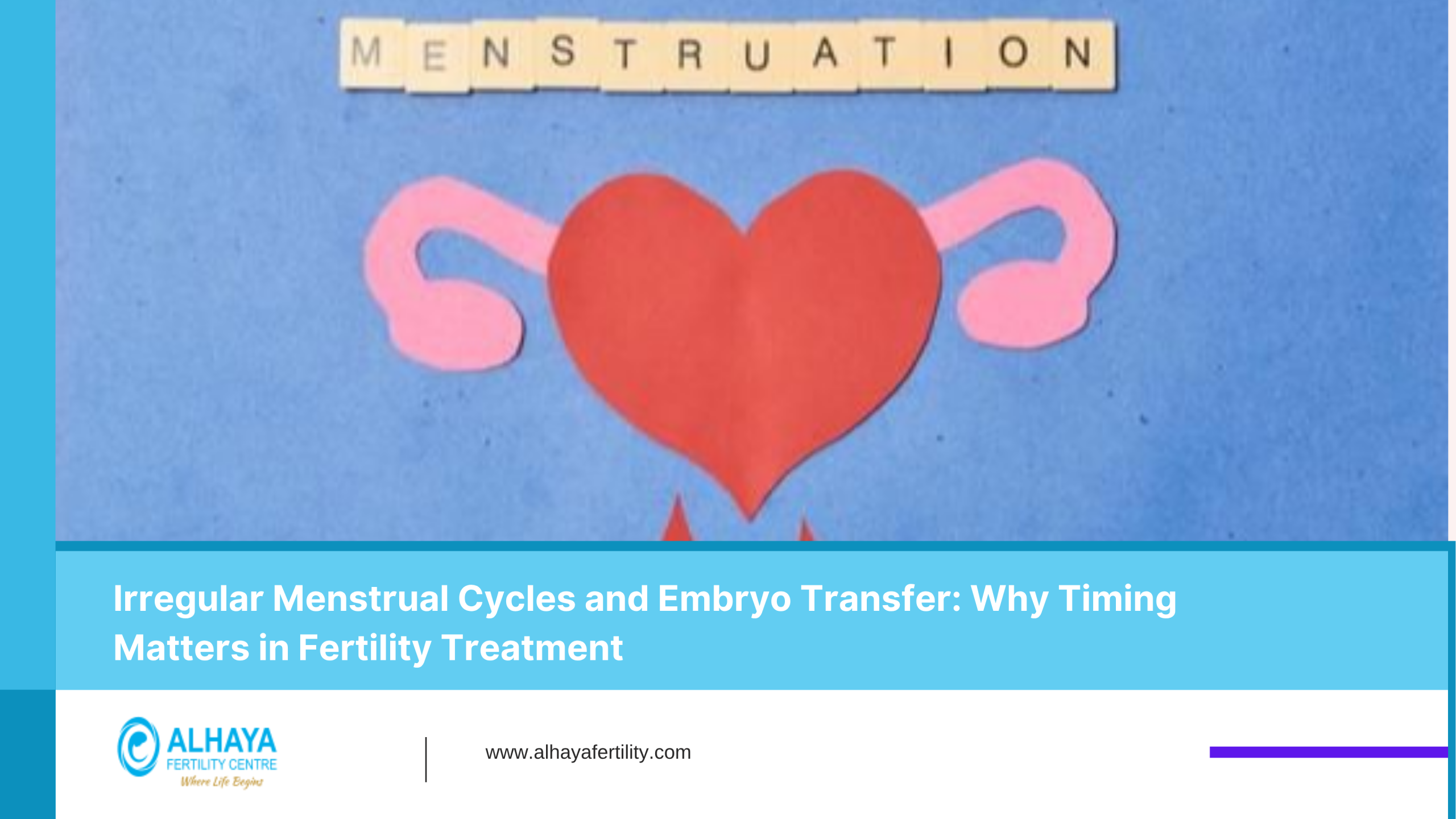For women undergoing fertility treatment, one of the most critical factors in achieving pregnancy is the timing of embryo transfer. This becomes especially complex for women with irregular menstrual cycles, where the predictability of ovulation and endometrial receptivity is often disrupted. The Endometrial Receptivity Analysis (ERA) test offers a practical solution by identifying the precise window when the uterus is most receptive to an embryo, helping to personalise embryo transfer and improve clinical outcomes.
Understanding Irregular Menstrual Cycles in the Context of IVF
A normal menstrual cycle typically ranges from 24 to 35 days and is characterised by a predictable ovulation phase. Women with irregular cycles may experience:- Cycle lengths that vary significantly from month to month.
- Unpredictable ovulation or anovulatory cycles.
- Fluctuating hormonal patterns.
The Role of the Endometrial Receptivity Analysis (ERA) Test
The ERA test analyses the expression of a panel of genes in a biopsy of the endometrial lining. These genes are associated with the receptive phase of the endometrium, which is typically a narrow 2–4 day window in the luteal phase of the cycle when the uterus is prepared to accept an embryo. For women with irregular cycles, this window may be displaced or occur earlier or later than expected, making it difficult to plan a transfer using standard protocols. The ERA test offers the ability to:- Identify the exact personalised window of implantation (WOI).
- Adjust the timing of progesterone administration and embryo transfer accordingly.
- Reduce the likelihood of failed implantation due to timing mismatch.
Clinical Relevance for Women with Irregular Cycles
Women with irregular cycles are less likely to benefit from standard embryo transfer protocols, which often assume a typical endometrial response to progesterone. For this subgroup, the following issues commonly arise:- Variable progesterone sensitivity: The endometrial response may not align with the expected timeline based on standard dosages.
- Altered gene expression: The molecular environment of the endometrium may be out of phase with embryo development.
- Higher risk of implantation failure: Transfers that occur outside the optimal receptive period reduce the chance of successful pregnancy.
Evidence Supporting ERA Use in Cycle Irregularities
While most ERA studies focus on patients with recurrent implantation failure (RIF), emerging evidence also supports its use for patients with hormonal or ovulatory irregularities. According to a review published in Current Opinion in Obstetrics and Gynecology, ERA has shown to help in identifying displaced WOI, a condition affecting an estimated 20–30% of IVF patients. For women with unpredictable luteal phases due to irregular cycles, the ability to accurately pinpoint receptivity provides a rational basis for personalised embryo transfer (pET), rather than relying on empirical timing.When Should ERA Be Considered for Irregular Cycles?
Not all women with irregular cycles require ERA testing. However, it is especially relevant in cases where:- Previous IVF cycles have failed despite the presence of good-quality embryos.
- Ovulation timing varies even under controlled ovarian stimulation.
- Luteal phase support results in inconsistent endometrial development.
- There is suspicion that hormonal therapy is not achieving the expected endometrial transition.
ERA and Personalised Embryo Transfer (pET)
Once the receptivity status is known, a personalised embryo transfer (pET) plan is developed. For example:- If the endometrium is pre-receptive at the time of testing, the transfer may be delayed by 12–24 hours.
- If the endometrium is post-receptive, transfer might be scheduled earlier in the cycle.
Limitations and Considerations
While ERA provides valuable data, it is not universally necessary. For women with consistent cycles and no history of implantation issues, standard timing may be sufficient. Additionally:- ERA is an added cost and involves an endometrial biopsy, which may not be suitable for all patients.
- It does not address other causes of infertility, such as male factor or uterine anomalies.
- It requires a delay of at least one cycle, as the test is performed in a mock (non-transfer) cycle.
Summary
Women with irregular cycles face unique challenges in fertility treatment due to unpredictability in ovulation and endometrial development. The ERA test provides a valuable tool to personalise the timing of embryo transfer, helping to address the risk of implantation failure due to a mismatched window of receptivity. While not required for all patients, it offers a promising approach for those with cycle-related timing difficulties.Considering Fertility Testing?
At Alhaya Fertility Centre, we understand how complex fertility care can be, especially for women with irregular menstrual cycles. Our specialists provide personalised assessments, including ERA testing, to ensure your embryo transfer is planned at the most optimal time.Let us help you make informed decisions grounded in science, compassion, and ethical care.
Take control of your fertility journey today – Contact Alhaya Fertility Consultants to book your personalised consultation.

